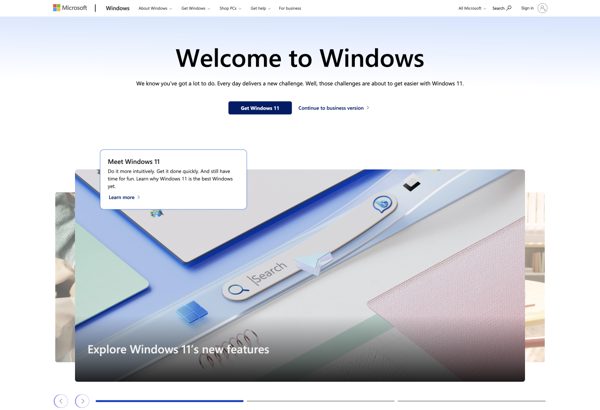Windows 11

Windows 11: Latest Windows OS with Visual Interface Redesign
Windows 11 is the latest version of Microsoft's Windows operating system, released in 2021. It introduces a redesigned visual interface with rounded corners and pastel colors, as well as performance improvements and new features like Teams integration and Android app support.
What is Windows 11?
Windows 11 is the latest version of the Windows operating system released by Microsoft in 2021 as the successor to Windows 10. It introduces several visual changes including rounded corners, a new centered Start menu and taskbar, and revised app icons using soft pastel colors and the Fluent Design system.
Under the hood, Windows 11 provides improved performance and efficiency due to a redesigned kernel and driver stack as well as native 64-bit ARM processor support. New features include deeper integrations with Microsoft Teams for easy access to contacts, chats, meetings and documents; support for running Android apps natively via the Amazon Appstore; and widgets on the desktop to quickly glance at information.
Several key aspects of the user interface have changed as well - the iconic Start button and taskbar have moved to the center of the screen by default and both support gestures and customizations. Snap layouts allow users to easily snap windows to various areas of the desktop. The OS also streamlines settings, multitasking and virtual desktop usage. System requirements have increased slightly leading to some controversy.
Overall, Windows 11 aims to provide a familiar yet simplified user experience focused on security, productivity and multitasking. Its Visual refresh and new features orient it towards hybrid work and touch-based devices like 2-in-1 convertible laptops.
Windows 11 Features
Features
- New visual design with rounded corners, pastel colors, and transparency effects
- Redesigned Start menu and taskbar
- Support for Android apps via Amazon Appstore
- Widgets on Start menu and taskbar
- Enhanced multitasking with Snap Layouts and Snap Groups
- Improved performance and efficiency
- DirectStorage API for faster game loading
- Teams integration
- Enhanced security features like TPM 2.0 and Secure Boot
Pricing
- One-time Purchase
- Subscription-Based (for some editions)
Pros
Cons
Reviews & Ratings
Login to ReviewThe Best Windows 11 Alternatives
Top Os & Utilities and Operating Systems and other similar apps like Windows 11
Here are some alternatives to Windows 11:
Suggest an alternative ❐Windows 10

Ubuntu

Linux Mint

Windows 7

Tiny11

IPadOS

Arch Linux

Debian

GalliumOS

Fedora

Manjaro Linux

Slax

Parrot Security OS

Bodhi Linux

AlmaLinux

Macpup

Xubuntu

LinuxFX

AOSC OS
Plop Linux
